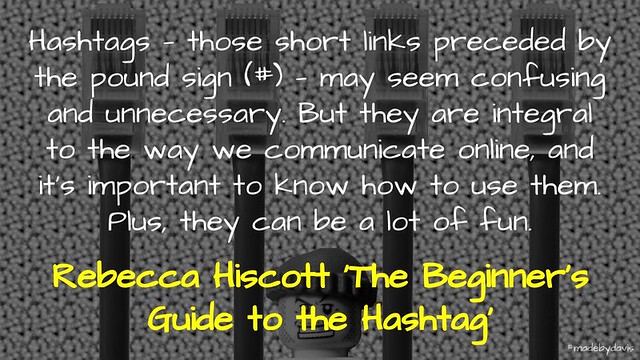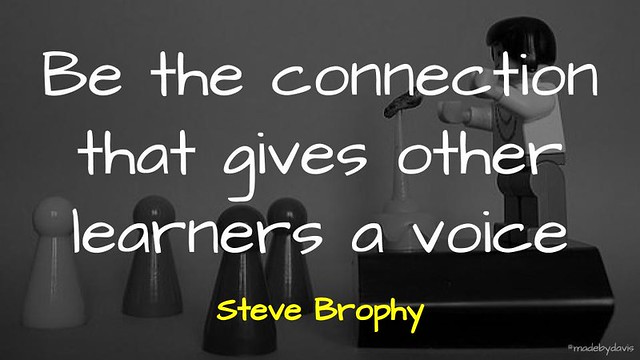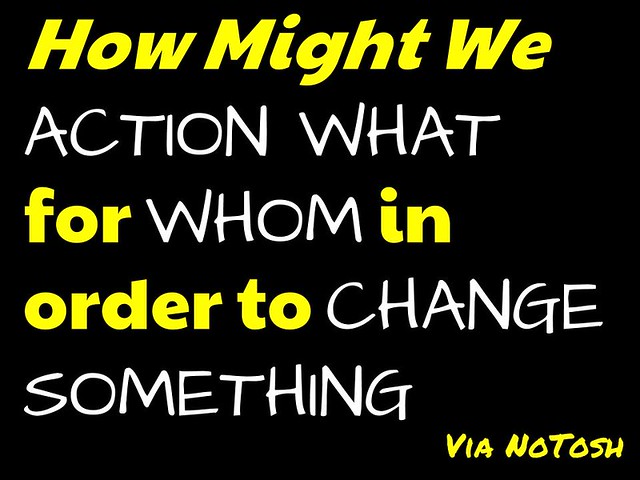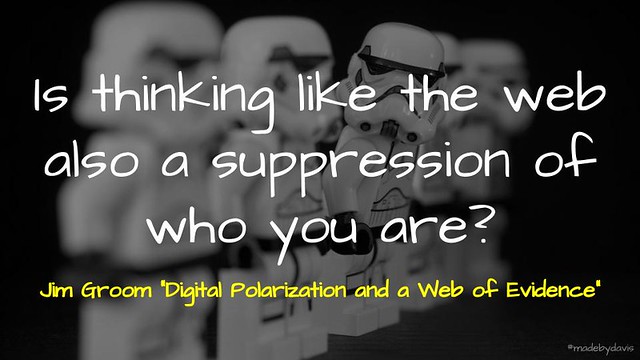
“Hashtags” by mrkrndvs is licensed under CC BY-SA
I was recently asked about my take on hashtags. I have written about hashtags before, whether it be their role within Twitter, the way in which they help foster sets and a reflection on what they mean to my own workflow. While I have been influenced by Jon Dron, Terry Anderson, Clive Thompson, Ian Guest and Kevin Hodgson. Here then is a summary of the different uses that have meaning to me.
- CHATS: The obvious use of hashtags, especially when it comes to education, is as a means of facilitating a chat. This is personified by Tom Whitby and #edchat. These are used at specific times designated by organisers and archived using applications such as Storify.
- TRIBES: Extending from the chat is the use of hashtags to collect together tribes. In Teaching Crowds, Jon Dron and Terry Anderson describe tribes as communities bringing people together around complex ideas and interests, tied together by certain rules and expectations. Jerry Blumengarten is oftwn quoted as the definitive source for hashtags. However, more recently Kasey Bell has attempted to update this. Although many of these hashtags are associated with chats, they are not confined to that and often take on a life of their own outside of them. Sometimes the challenge with using what seems like the ‘right’ hashtag is that it is difficult to remember every common hashtag, while it seems tedious to go check lists all of the time.
- RANDOM TEMPORAL CONNECTIONS: Similar to the idea of an in joke, where what is being said only makes sense when privy to the context behind it. Two that come to mind are #whereisHa and #TwodayswithElton. Based on the idea of Where’s Wally, #WhereisHa was started by a group of participants at DLTV14 when Michael Ha was running late having just flown back into Australia from USA. #twodayswithelton was a tag between Ross Halliday and I leading up to Google Teachers Academy a few years ago. It started when Ross said that I looked like Elton John. We then started a swapping lyrics that acted as something of a sidechat to the official #GTASyd14 hashtag. This informal ad-hoc use is captured by Dean Shareski in his discussion of a more playful Twitter. Another temporal use is also a hashtag around a particular event, whether this be a conference or a camp.
- EMOTIONS: A different take on the informal is the use of hashtags to capture emotions or responses. This is best demonstrated in Instagram, where everything seems to be interconnected through hashtags. However, it is used on Twitter to highlight various attributes, such as #longread, #trust and #leadership.
Personally, I don’t really think that I use hashtags that effectively. Fine I have a few ‘go tos’, such as vicpln, digilit, edchat, leadwild, edtechteam, disruptedu and gsuiteedu. However, beyond that I don’t really actively use them unless i have clear reason. There are some that seem to methodically share their posts across a range of tribes by including five tags in Tweet. I also tried to game Feedly by placing blogs into categories that would automatically be turned into a tag. There are some that I used to use quite a bit, such as #rhizo14, #TL21c and #ccourses. However, over time these tribes have seemingly moved away. Interestingly, these tags were associated with courses. This in itself may say something.
So what about you? What do hashtags mean to you? As always, comments welcome.
If you enjoy what you read here, feel free to sign up for my monthly newsletter to catch up on all things learning, edtech and storytelling.









